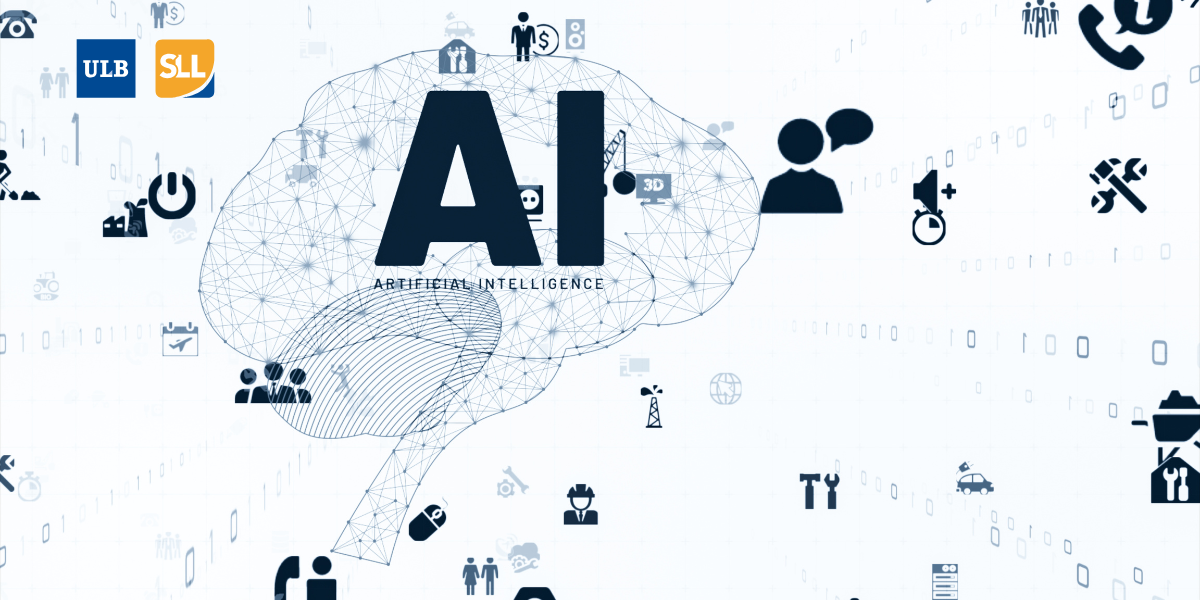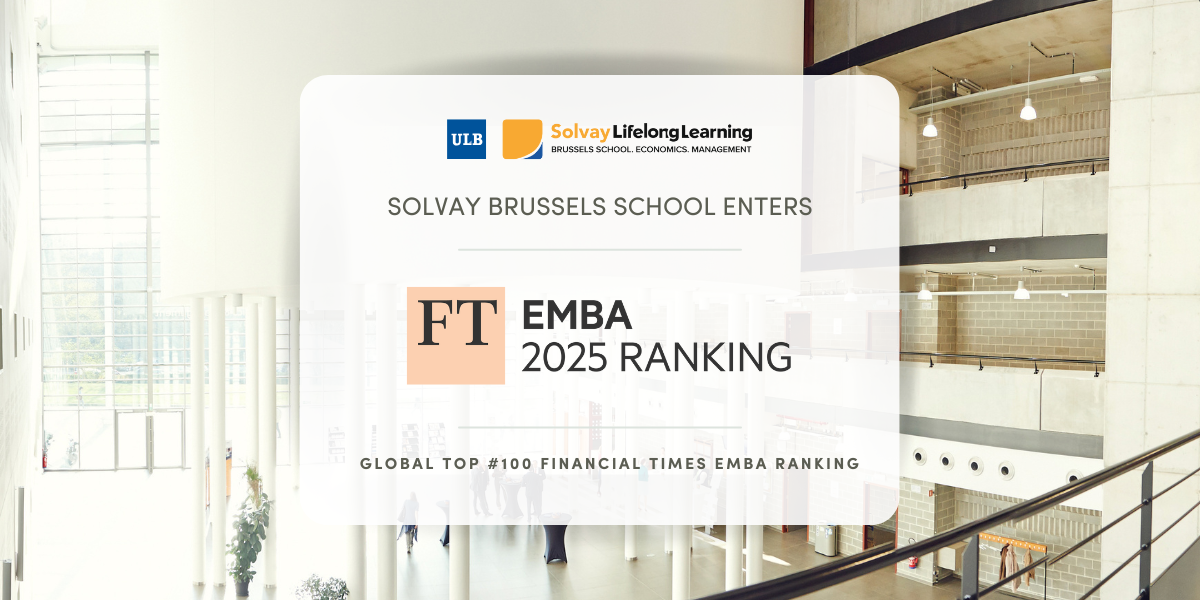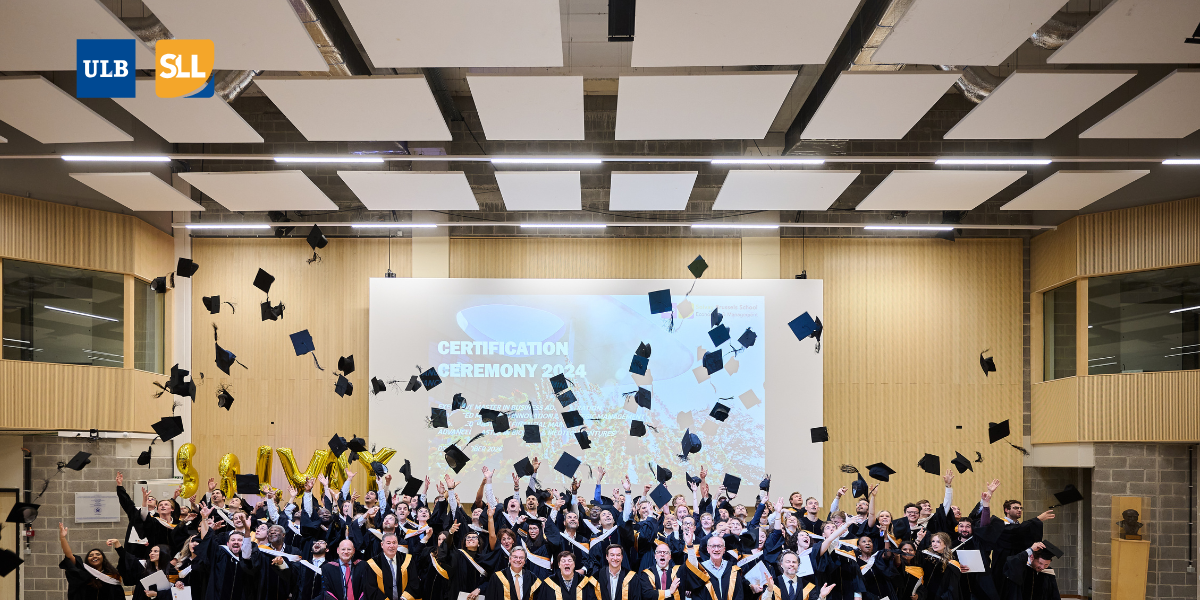Learn more about us.
Europe Adrift in the AI Revolution: The Chinese Wake-up Call

Alex Papanastassiou |Author
Alex is Executive consultant in digital transformation, business strategy and architecture of core business applications, specialising in growing privately-held, owner-managed European companies since 2004. He is an Adjunct Professor and Advisor for Digital Innovation and Transformation at Solvay Brussels School

Stay connected
Never miss the latest insights, blogs and news. Subscribe to our newsletter.
At Solvay Lifelong Learning, we’re excited to share insights from our academic community on today’s pressing issues. This article, “Europe Adrift in the AI Revolution: The Chinese Wake-up Call”, originally published on the Forward Slash blog by Alexandre Papanastassiou, discusses the emerging need for Europe to forge its own path in AI development.
From Europe's regulatory comfort zone to China's AI breakthroughs, Alexandre provides a critical analysis of the shifting global AI landscape, delving into how Europe's reliance on regulation, rather than innovation, leaves it vulnerable to both American export restrictions and China's aggressive advancements in AI technology. This piece is particularly relevant for policy makers, tech leaders, and business strategists navigating the evolving dynamics of AI competition and geopolitical strategy.
The emergence of Chinese AI companies like DeepSeek and ByteDance's Doubao in 2024 represents more than just new market entrants—it signals China's systematic approach to technological dominance. This article examines how Europe, caught between American export restrictions and Chinese innovation, must move beyond regulatory frameworks to develop genuine technological capabilities. Through analysis of China's aggressive pricing strategies, technological achievements, and strategic investments, we explore the urgent need for Europe to forge its own path in AI development, one that combines its scientific excellence and ethical foundations with effective execution capabilities.
The Pricing Disruption: Market Strategy or Technological Edge?
What truly caught global attention was China's aggressive pricing strategy. DeepSeek-R1 entered the market at $0.55 per million tokens, with cache mechanisms reducing costs to $0.14. Even more striking, ByteDance's Doubao 1.5 Pro pushed prices to an unprecedented $0.02 per million cached tokens—a 20-to-100-fold reduction compared to Western competitors.
These pricing strategies bear a striking resemblance to TikTok's global expansion. Just as ByteDance maintains different versions of TikTok for domestic and international markets, questions arise about dual approaches to AI deployment. The parallels extend beyond business strategy, touching on concerns about data sovereignty and potential influence operations. Critics argue that such pricing may reflect a deliberate strategy to create global dependency on Chinese models, mirroring China's broader industrial strategies.
This pricing also draws comparisons to European success stories like Mistral, which has achieved notable breakthroughs with a fraction of the resources available to OpenAI. However, Mistral’s success remains an exception in Europe, where political fragmentation and lack of industrial vision hinder broader adoption of similar strategies.
While these ultra-low prices promise greater accessibility, they also pave the way for mass adoption of Chinese AI models. This dominance in deployment raises significant geopolitical and cybersecurity concerns, particularly as these systems integrate into sensitive sectors worldwide.
AI as a Geopolitical Tool: Cybersecurity & Influence Concerns
Hands-off approaches like "community notes" don't lead to freedom; they lead to chaos. They allow the loudest and most extreme voices to dominate, while systemic disinformation reshapes reality under the radar. Just as harmful is unchecked, opaque moderation controlled by private companies—silencing voices arbitrarily and further eroding public trust.
In response to these concerns, the American open-source AI platform Hugging Face launched the Open-R1 initiative. Its goal is to reverse-engineer DeepSeek R1’s training methods and uncover how these models achieve their efficiency. While DeepSeek’s technical reports are public, critical development details—datasets, code, and hyperparameters—remain undisclosed. This lack of transparency fuels fears about the origins of training data, the potential embedding of hidden biases, and the weaponization of narratives through AI tools.
Adding complexity is the dual-use potential of these AI technologies. The overlap between civilian and military applications highlights China’s integrated approach to technology development, where state objectives and private-sector innovation are deeply intertwined. This integrated strategy presents challenges for collaboration, competition, and global trust in emerging AI systems.
STEM Excellence & The Reality of Chinese Innovation
Reducing China’s AI advancements to pricing tactics alone would be a critical mistake. China’s leadership in science, technology, engineering, and mathematics (STEM) underpins its AI strength. Institutions like Tsinghua, Peking University, Zhejiang University, and Jiao Tong University rank among the best globally, producing a steady stream of AI talent. These academic pillars are complemented by innovation hubs like Shenzhen, where development cycles for robotics and electronics significantly outpace those in Europe.
Shenzhen’s innovation ecosystem benefits from China’s deliberate industrial policies, which prioritize AI and robotics integration. For instance, the Longhua AI-robotics industrial park, launched in early 2025, represents a strategic focus on next-generation technologies. Books like Kai-Fu Lee’s AI Superpowers and Mark J. Greeven’s Pioneers, Hidden Champions, Changemakers, and Underdogs highlight the deliberate alignment of China’s educational, industrial, and governmental efforts, which collectively drive its leadership in innovation.
China’s success lies in its deliberate alignment of education, industry, and policy. For Europe, the challenge is to replicate this synergy without sacrificing its values, leveraging its own world-class research institutions and technical expertise to compete on a global stage.
Europe’s Dilemma: Navigating Between US Restrictions & Chinese Innovation
Europe finds itself increasingly squeezed between U.S. export restrictions and China’s rapid technological advancements. Recent American controls have expanded to include AI model weights, advanced computing components, and global licensing requirements for key AI technologies. Even neutral countries like Switzerland, as well as EU member states such as Austria, Luxembourg, Poland, and Hungary, are feeling the impact of these restrictions.
These policies complicate Europe’s position. Relying on U.S. technology deepens strategic dependence, while engaging with Chinese innovation introduces geopolitical and ethical vulnerabilities. Developing independent AI capabilities, computing power and sovereign deeptech is the only viable long-term strategy, yet it requires a level of proactive leadership and investment that Europe has yet to demonstrate.
The global AI landscape is fragmenting along geopolitical lines, with the U.S. restricting exports and China advancing its own ecosystem. This fragmentation leaves Europe at a crossroads, forcing it to choose between alignment with these powers or developing a more autonomous path forward.
Europe could deepen collaborations with AI leaders like Japan or South Korea, whose emphasis on ethical AI and technological sovereignty aligns closely with European values.
Europe’s Path Forward: Beyond Regulation to Innovation
Europe has long relied on its regulatory prowess, with initiatives like the EU AI Act setting global standards for ethical AI. However, rules alone cannot build technological leadership. Europe must shift from regulation-first strategies to a more balanced approach that prioritizes innovation alongside oversight.
This requires leveraging Europe’s inherent strengths, including its world-class research institutions, engineering traditions, and human-centric approach to technology. Financial investment must extend beyond compliance initiatives to actively support research, startups, and AI ecosystems. Furthermore, Europe’s ethical values can be a foundation for innovation rather than a constraint, ensuring that ethical tech becomes a competitive advantage rather than a limiting factor. Again here the bet on carefully balanced open source could prove strategically as important as it appears to be in the case of DeepSeek.
Europe must:
-
Leverage its strengths: Scientific excellence, engineering traditions, and technical expertise.
-
Invest beyond compliance: Funding research and development in AI and fostering startups.
-
Balance ethics with competitiveness: Ethical values must be a foundation, not a limitation.
France’s investments in quantum computing or Germany’s AI research hubs could serve as blueprints for pan-European clusters, leveraging regional strengths to build a cohesive innovation network.
Europe’s ability to compete depends on its willingness to develop a unique AI strategy, one that avoids mimicry of U.S. and Chinese models and instead builds on its human-centric approach.
Conclusion: A Call for Strategic Renewal
Europe must move beyond regulatory comfort zones and invest boldly in sovereign AI ecosystems. By leveraging its scientific excellence, engineering tradition, and ethical leadership, Europe can shape the future of AI rather than be shaped by it. The time to act is now.
Europe must:
-
Move beyond regulation as its primary AI strategy.
-
Invest in protection measures and in integrated intelligence and security agencies to protect European interests autonomously.
-
Go back to defining the future in fundamental research and applications in deep tech, leveraging in particular quantum physics.
-
Invest in sovereign AI ecosystems and sovereign infrastructure.
-
Capitalize on strengths like scientific rigor and ethical innovation.
-
Create a robust network of innovation clusters across Europe, prioritizing strategic needs over political demands.
Will Europe rise to the occasion and reclaim its place as a technological leader, or will it remain a mere spectator in the AI revolution?
Learn More: Alexandre Papanastassiou brings his expertise as an Adjunct Professor teaching Digital Innovation in the Solvay Advanced Master in Innovation & Strategic Management. He also leads the "Leading the Digital Transformation" module in Solvay's Executive Master in Management.
Stay connected
Never miss the latest insights, blogs and news. Subscribe to our newsletter.

Newsletter subscription
Never miss the latest insights, blogs and news
Subscribe to our newsletter and never miss the latest insights, events and blogs.
What other people like
Related blogs
Our Editorial Team brings you the latest in blog posts covering business, finance, sustainability, and programme insights from Solvay Lifelong Learning!
6/11/25
Our Editorial Team brings you the latest in blog posts covering business, finance, sustainability, and programme insights from Solvay Lifelong Learning!
13/10/25

Bruno is Senior Advisor and Ambassador for Innovation at EY and the Academic Director of the Solvay EMBA and Accelerated Management Programme. He is an expert in strategy, Entrepreneurship and Innovation.
9/04/25


